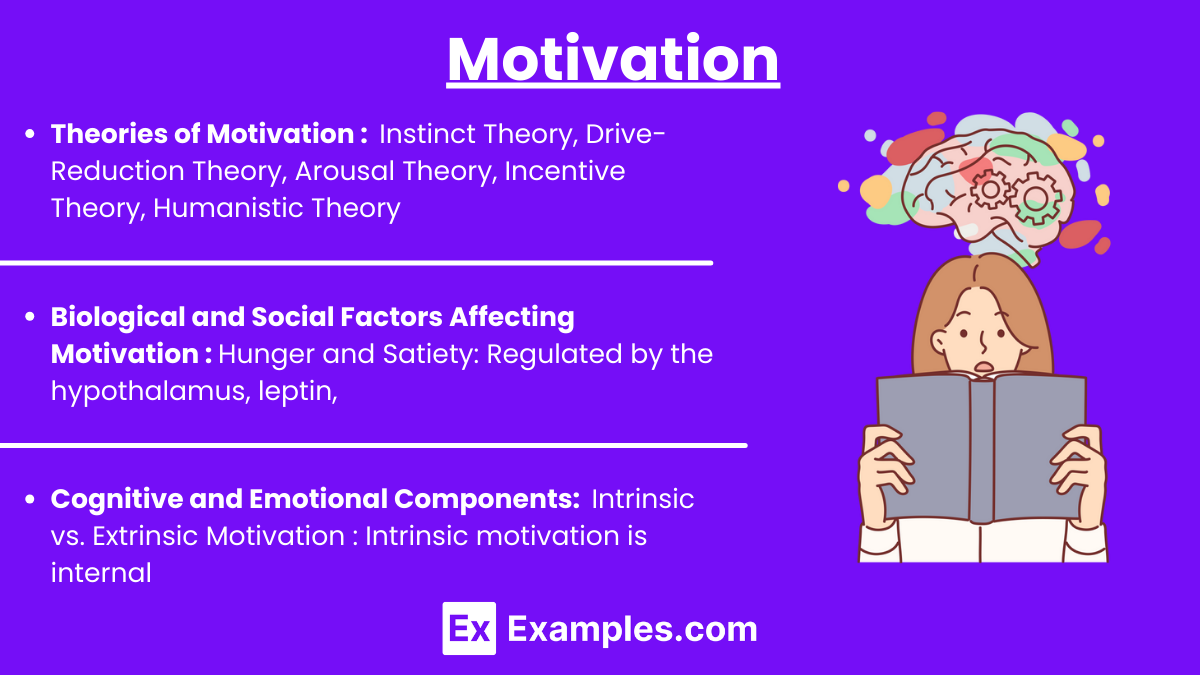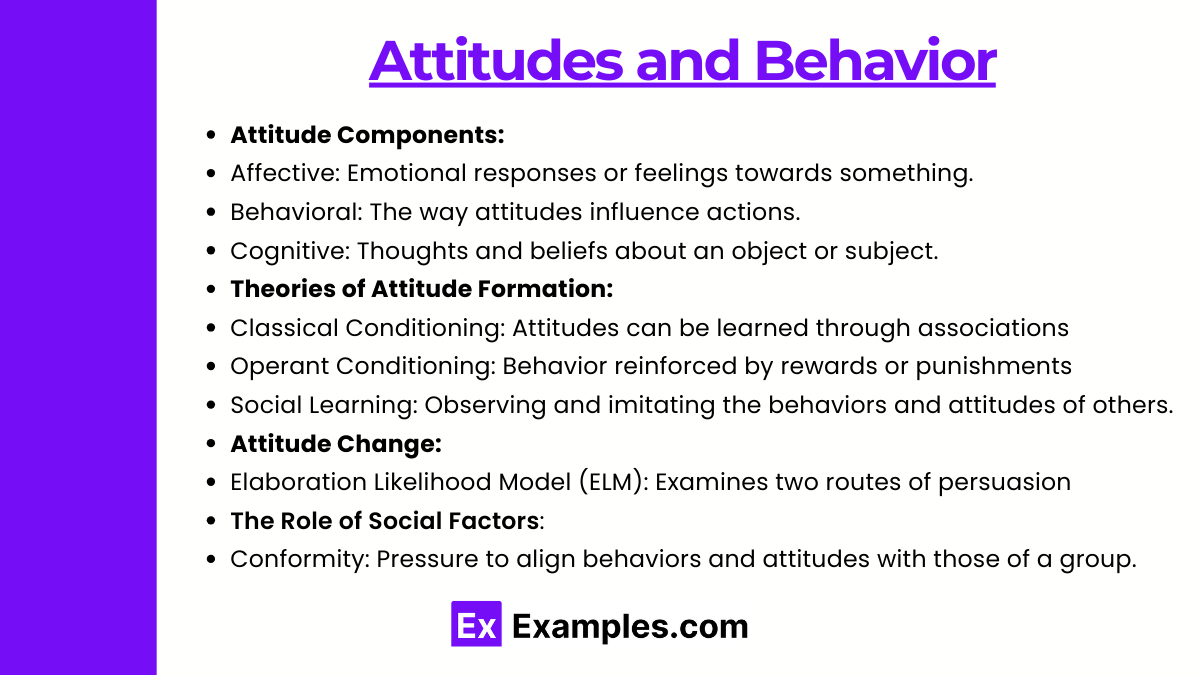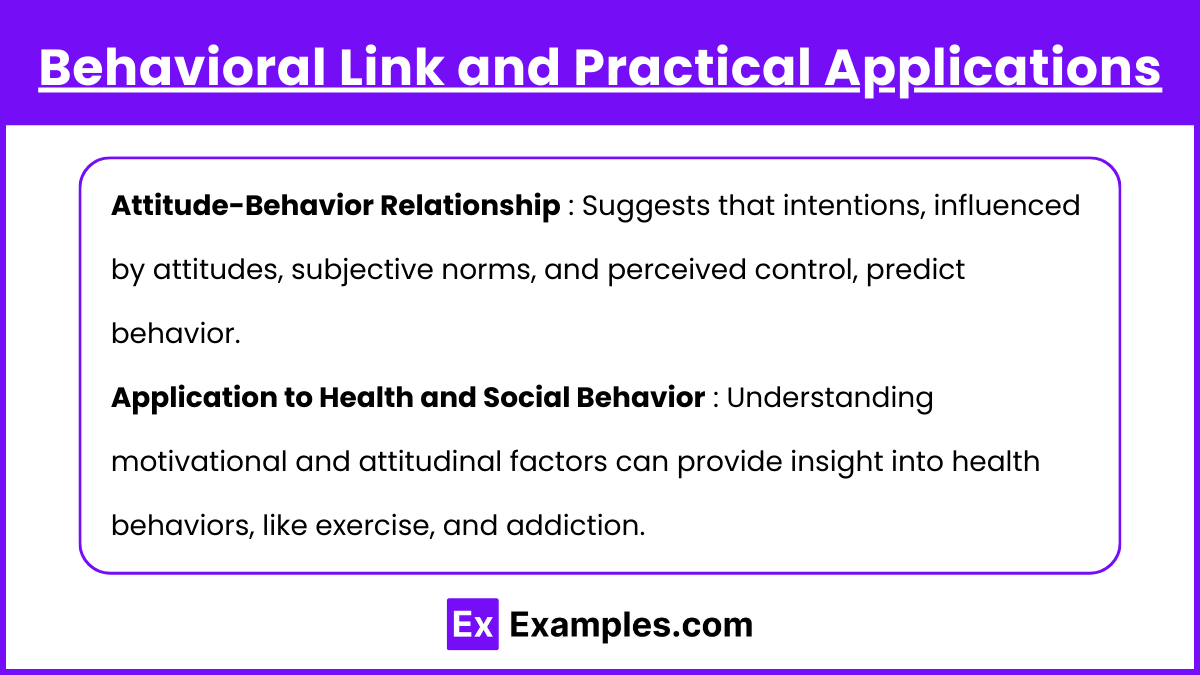Motivation and attitudes are key drivers behind human behavior, influencing the way individuals approach goals, challenges, and daily tasks. Motivation refers to the internal and external factors that stimulate desire and energy in people, directing their efforts toward achieving specific objectives. Attitudes, on the other hand, are shaped by experiences, beliefs, and emotions, and they impact how people perceive and react to various situations. Together, motivation and attitudes play a significant role in shaping personal growth, performance, and overall satisfaction in life.
Learning Objectives
In studying “Motivation and Attitudes” for the MCAT, you should learn to understand the psychological theories explaining motivation, including drive-reduction theory, Maslow’s hierarchy of needs, and the incentive theory. Analyze how intrinsic and extrinsic motivation influence behavior and explore the components of attitudes—affective, behavioral, and cognitive. Evaluate theories like the theory of planned behavior and cognitive dissonance theory to understand how attitudes shape actions and how behavior can modify attitudes. Additionally, explore how motivation and attitudes play roles in real-world settings, including health behavior change, and apply your understanding to interpreting scenarios and experimental results in MCAT practice passages.
Motivation

- Theories of Motivation:
- Instinct Theory: Explores innate behaviors that drive individuals to act in certain ways.
- Drive-Reduction Theory: Proposes that behavior is motivated by biological needs, which create a state of tension (drive) that an individual seeks to reduce.
- Arousal Theory: Focuses on the idea that people seek to maintain an optimal level of arousal. The Yerkes-Dodson Law is significant here, suggesting performance improves with arousal up to a point, after which it declines.
- Incentive Theory: Emphasizes the role of external stimuli and rewards as motivators.
- Humanistic Theory (Maslow’s Hierarchy of Needs): Centers on the prioritization of needs from physiological to self-actualization, influencing motivation hierarchically.
- Biological and Social Factors Affecting Motivation:
- Hunger and Satiety: Regulated by the hypothalamus, leptin, and ghrelin hormones, influencing motivation for food consumption.
- Sexual Motivation: Driven by biological factors (hormones) and influenced by cultural and social factors.
- Drug Use: An example of a behavior impacted by reward pathways in the brain, like dopamine.
- Cognitive and Emotional Components:
- Intrinsic vs. Extrinsic Motivation: Intrinsic motivation is internal (e.g., enjoyment), whereas extrinsic motivation is external (e.g., rewards).
- Cognitive Dissonance Theory: This suggests discomfort occurs when beliefs and actions are misaligned, motivating individuals to change beliefs or behaviors to reduce discomfort.
Attitudes and Behavior

- Attitude Components:
- Affective: Emotional responses or feelings towards something.
- Behavioral: The way attitudes influence actions.
- Cognitive: Thoughts and beliefs about an object or subject.
- Theories of Attitude Formation:
- Classical Conditioning: Attitudes can be learned through associations (e.g., associating positive feelings with a particular brand).
- Operant Conditioning: Behavior reinforced by rewards or punishments can shape attitudes.
- Social Learning: Observing and imitating the behaviors and attitudes of others, especially influential figures, can impact one’s attitudes.
- Attitude Change:
- Elaboration Likelihood Model (ELM): Examines two routes of persuasion:
- Central Route: Involves thoughtful consideration of the arguments, effective for lasting attitude change.
- Peripheral Route: Uses superficial cues, effective when individuals are less engaged.
- Cognitive Dissonance: Drives individuals to change attitudes to align with behaviors, reducing internal conflict.
- Elaboration Likelihood Model (ELM): Examines two routes of persuasion:
- The Role of Social Factors:
- Conformity: Pressure to align behaviors and attitudes with those of a group.
- Obedience: Adherence to authority, often influencing actions against personal attitudes.
- Groupthink and Peer Influence: Tend to shape attitudes based on group norms, sometimes leading to suppression of dissenting opinions.
Behavioral Link and Practical Applications

- Attitude-Behavior Relationship:
- Theory of Planned Behavior: Suggests that intentions, influenced by attitudes, subjective norms, and perceived control, predict behavior.
- Self-Perception Theory: States that people infer their attitudes by observing their behavior.
- Application to Health and Social Behavior:
- Understanding motivational and attitudinal factors can provide insight into health behaviors, like adherence to medical advice, exercise, and addiction.
Examples
Example 1 : Intrinsic Motivation in Studying
Intrinsic motivation plays a significant role in preparing for the MCAT, as students often need to sustain interest over long periods of study. Those driven by an internal desire to learn and achieve personal growth are more likely to stay focused, even when faced with difficult or less engaging material. For example, a student motivated by a genuine passion for medicine and a desire to understand the biological and psychological mechanisms of the human body may find the study process more rewarding and enjoyable. This motivation can help them maintain a positive attitude and stay committed, even when challenges arise.
Example 2 : Extrinsic Motivation from External Rewards
Some students may be primarily motivated by extrinsic factors, such as obtaining a high score on the MCAT to gain acceptance into a prestigious medical school. This external goal can drive them to work harder and adopt strategic study habits, like following structured study plans or enrolling in MCAT prep courses. Though extrinsic motivation can be less sustainable than intrinsic motivation, it can provide a powerful initial push. For students motivated by the end reward, keeping their goal in mind can help them overcome procrastination and complete intensive study sessions.
Example 3 : Attitude Toward Test-Taking
A student’s attitude toward standardized testing can greatly impact their performance and study approach. Students with a positive or neutral attitude toward tests may approach the MCAT as a learning experience or a chance to showcase their knowledge. Conversely, students with a negative attitude toward testing may experience heightened anxiety or self-doubt, which could hinder their performance. Cultivating a positive mindset and viewing the MCAT as an opportunity rather than a barrier can help mitigate test anxiety and encourage more effective preparation.
Example 4 : Growth Mindset and Adaptability
Having a growth mindset—the belief that abilities can be developed through dedication and hard work—can significantly improve MCAT performance. Students who view intelligence as malleable may be more inclined to adapt their study strategies when encountering challenges, rather than feeling discouraged. For instance, if they initially struggle with a particular section, they may see it as an opportunity to improve rather than as a sign of failure. This positive, adaptable attitude can enhance resilience, helping students persist through challenging study periods and improve their weak areas over time.
Example 5 : Influence of Peer and Social Motivations
The social context, including the motivations of peers, can also shape a student’s attitude toward the MCAT. For example, students in study groups may feel motivated by a sense of camaraderie or healthy competition with friends who are also preparing for the exam. Being surrounded by motivated peers can boost a student’s morale, provide emotional support, and introduce them to effective study techniques. This social motivation can foster a collaborative and supportive attitude toward MCAT prep, enhancing their commitment and willingness to tackle difficult material.
Practice Questions
Question 1
In microeconomics, motivation is primarily related to which of the following concepts?
A) Maximizing social welfare
B) Achieving market equilibrium
C) Maximizing utility or profit
D) Minimizing government intervention
Answer: C) Maximizing utility or profit
Explanation: In microeconomics, motivation often refers to the incentives that drive individual or firm behavior. For individuals (consumers), the primary motivation is to maximize utility (satisfaction or happiness), while for firms, it is typically to maximize profit. This motivation influences decisions such as consumption choices for consumers and pricing, production levels, and resource allocation for firms. Social welfare maximization is a broader concept often associated with public economics, and market equilibrium is an outcome of demand and supply forces, not a direct motivation for individuals or firms.
Question 2
Which of the following best describes a consumer’s attitude when they exhibit diminishing marginal utility?
A) A preference for higher quantities due to increased satisfaction per additional unit
B) A decreasing level of satisfaction for each additional unit consumed
C) An increasing willingness to pay for each additional unit
D) A lack of interest in any further consumption after a certain point
Answer: B) A decreasing level of satisfaction for each additional unit consumed
Explanation: Diminishing marginal utility refers to the principle that as a consumer consumes more units of a good or service, the additional satisfaction (or utility) derived from each additional unit decreases. For instance, the first slice of pizza might provide high satisfaction, but each subsequent slice provides less additional satisfaction than the previous one. This attitude affects consumer behavior, as it often leads to a decrease in willingness to pay for additional units, impacting demand curves and the allocation of spending.
Question 3
In terms of economic motivation, a firm’s willingness to produce a good at a certain price is most closely associated with:
A) Consumer surplus
B) The law of supply
C) Price elasticity of demand
D) Diminishing marginal returns
Answer: B) The law of supply
Explanation: The law of supply indicates that as the price of a good increases, firms are more motivated to supply greater quantities of that good due to the potential for higher profits. Conversely, when prices decrease, firms are less inclined to produce as much, as the profitability is lower. This motivation underlies the upward-sloping nature of the supply curve in microeconomics. Consumer surplus is a measure of consumer benefit, price elasticity relates to how quantity demanded changes with price, and diminishing marginal returns is a production concept that impacts costs but not the motivation linked directly to supply.


